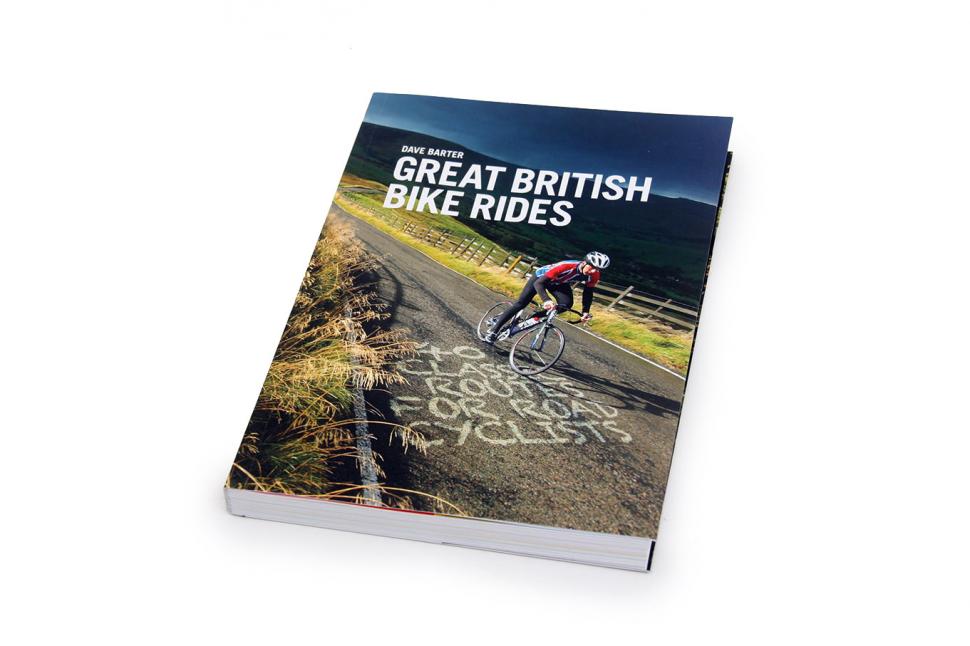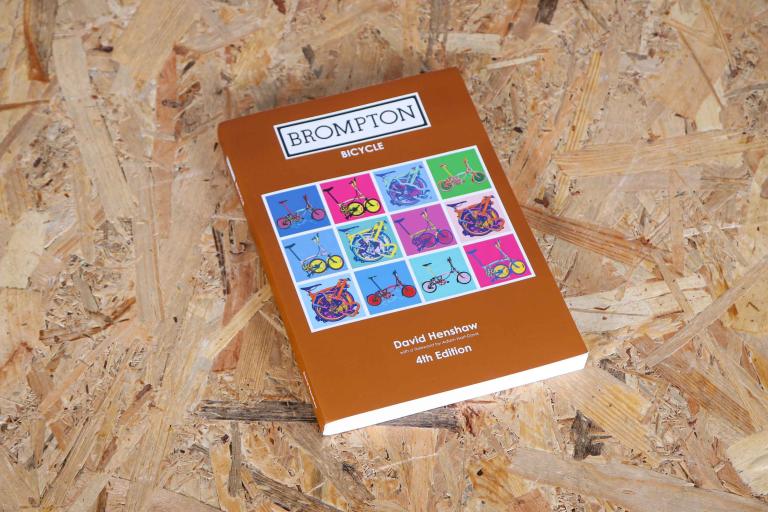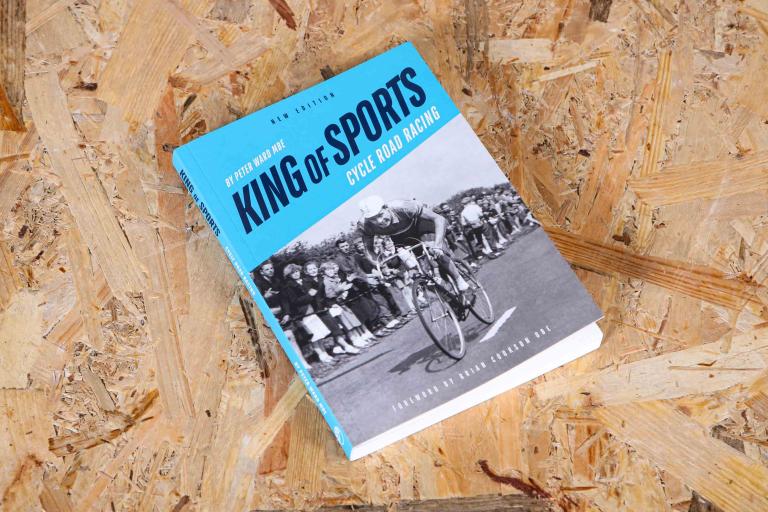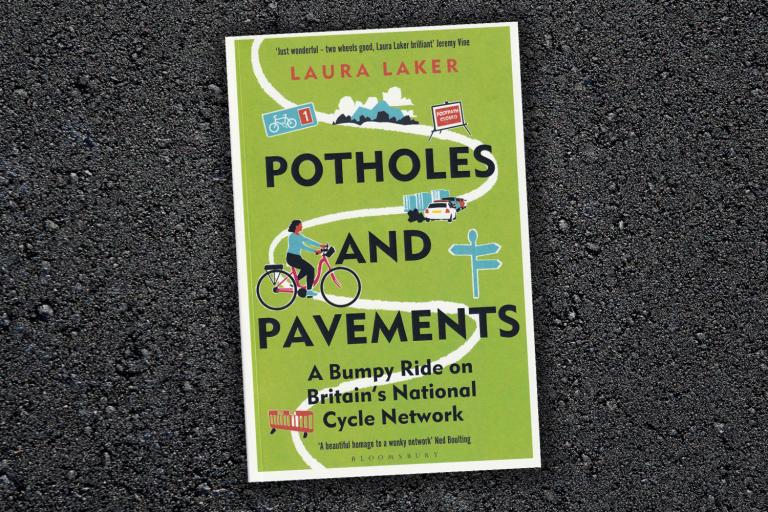- News
- Reviews
- Bikes
- Accessories
- Accessories - misc
- Computer mounts
- Bags
- Bar ends
- Bike bags & cases
- Bottle cages
- Bottles
- Cameras
- Car racks
- Child seats
- Computers
- Glasses
- GPS units
- Helmets
- Lights - front
- Lights - rear
- Lights - sets
- Locks
- Mirrors
- Mudguards
- Racks
- Pumps & CO2 inflators
- Puncture kits
- Reflectives
- Smart watches
- Stands and racks
- Trailers
- Clothing
- Components
- Bar tape & grips
- Bottom brackets
- Brake & gear cables
- Brake & STI levers
- Brake pads & spares
- Brakes
- Cassettes & freewheels
- Chains
- Chainsets & chainrings
- Derailleurs - front
- Derailleurs - rear
- Forks
- Gear levers & shifters
- Groupsets
- Handlebars & extensions
- Headsets
- Hubs
- Inner tubes
- Pedals
- Quick releases & skewers
- Saddles
- Seatposts
- Stems
- Wheels
- Tyres
- Health, fitness and nutrition
- Tools and workshop
- Miscellaneous
- Cross country mountain bikes
- Tubeless valves
- Buyers Guides
- Features
- Forum
- Recommends
- Podcast
review
 Great British Bike Rides by Dave Barter
Great British Bike Rides by Dave Barter£25.00
VERDICT:
A pretty good selection of route with lots of useful detail.
Weight:
621g
Contact:
At road.cc every product is thoroughly tested for as long as it takes to get a proper insight into how well it works. Our reviewers are experienced cyclists that we trust to be objective. While we strive to ensure that opinions expressed are backed up by facts, reviews are by their nature an informed opinion, not a definitive verdict. We don't intentionally try to break anything (except locks) but we do try to look for weak points in any design. The overall score is not just an average of the other scores: it reflects both a product's function and value – with value determined by how a product compares with items of similar spec, quality, and price.
What the road.cc scores meanGood scores are more common than bad, because fortunately good products are more common than bad.
- Exceptional
- Excellent
- Very Good
- Good
- Quite good
- Average
- Not so good
- Poor
- Bad
- Appalling
Dave Barter's Great British Bike Rides presents 40 well-thought-out, challenging routes that will appeal to sportive riders looking for some solo adventures.
With the Wiggo effect still reverberating there's been a plethora of books on British bikes rides in the past few months to coincide with the gusty damp season we still call summer. Some have been gentle encouragement to new cyclists, others jumping on the bandwagon a little and lacking sufficient detail and encouragement for you to get out there.
Written by David Barter, a former post office engineer with the cycling bug and possessing - judging by his gaunt author photo - a body fat count of about 5%, Great British Bike Rides is a tougher propostion by far.
In the book's four regions - Southern England, Northern England, Wales and Scotland - Barter has created some fine routes, carefully constructed to keep you away from busy roads as much as possible and challenge you each time.
I would first bear in mind Barter's comment concerning fitness on page 13. 'Most of these rides are within reach of any cyclist who has recently completed a distance of sixty miles or more.' If you've recently completed 60 miles in Norfolk then many of the rides - the North Yorks Moors ride has a maximum gradient of 32% - are going to be a bit of a shock. However, there are full maps and significant hills are given their own gradient charts so you can't say you weren't warned.
It's not all punishment. I notice with relief that Barter wisely swerves the punishing coast road west of Weymouth on his Dorset route but it's still wise to study very carefully the gradient charts and leave any route with a substantial black colour coding denoting 'extreme' until your legs are ready.
There's a particularly fine route around Anglesey and Snowdonia at a hefty 91 miles; the Scottish routes look lovely, and Barter successfully balances pain with gain to give you routes constructed more for their overall pleasure than a masochistic obsession with gradient.
You're encouraged to use online sites to construct your own pocket maps for each route and there are downloadable GPX files of each route. Nevertheless, those of you without a Garmin will have no problem translating these routes to good old fashioned paper as your forefathers did.
Regrettably there are one or two errors with a few facts and figures. The rather generous inclusion of Rutland, Lincolnshire, and Norfolk as part of the Northern ride section for instance. For those who get a nose bleed north of Birmingham it might seem fine, but as a general rule of thumb anything south of a diagonal line drawn between the Mersey and the Humber is not in the North.
Barter's description of Mow Cop in Cheshire as 'an utter horror story' is painfully accurate but unfortunately the gradient chart isn't. It shows a climb of over 16km and a maximum gradient of 16.5%, when Mow Cop is 1.45km and tops 25% for the final brutal 150 metres.
As purely a matter of personal taste I would ride the Bowland route shown back-to-front as the climbs, for me at least, are more satisfying that way around and that's probably why parts of it are run that way for the Pendle Pedal each year.
Quibbles aside it's a well thought out and presented guide to some of the best cycle routes in the UK for people who want to feel as if they're doing a sportive without having loads of portly gents in loud lycra crunching gears around them the whole way.
Verdict
A pretty good selection of route with lots of useful detail.
road.cc test report
Make and model: Great British Bike Rides by Dave Barter, Vertebrate Publishing
Size tested: N/A
About the tester
Age: 47 Height: Weight:
I usually ride: A 20 year old Condor Italia on the school run. My best bike is: Condor Moda Ti - summer bike
I've been riding for: Over 20 years I ride: Every week I would class myself as: Experienced
I regularly do the following types of riding: road racing, club rides, sportives, general fitness riding,
Latest Comments
- kingleo 3 hours 18 min ago
The anty-cyclist makes up facts and talks rubbish, they never show us any research to substantiate what they tell us is true.
- mitchibob 3 hours 54 min ago
Have to wonder whether they lost as many subscriptions as Strava with the ridiculous dumb crap they've done in the last year that decided I wasn't...
- Dunnoeither 4 hours 49 min ago
Extra points for matching the bag! Small things
- NE2Wheels 6 hours 41 min ago
Assertive if you prefer. But nobody likes being criticised, and there's always a risk that if you criticise someone assertively for their driving...
- captain_slog 7 hours 22 min ago
These are all shown mounted to the seatpost. That's not always an option for me and I have one of these to mount a rear light horizontally: https:/...
- wtjs 8 hours 3 min ago
Surely, they can't be dim enough to sit on it for as long as possible and then claim 'something...something..GDPR..etc'? Can they?...
- KDee 8 hours 18 min ago
Most phones now have a decent IP rating so I wouldn't worry about a little condensation. Your sweat won't get into it and I don't think there's a...
- wtjs 8 hours 55 min ago
they have a hard upper cut-off so they don't dazzle...




Add new comment
6 comments
I love your comment about Dave's body fat.
I read and enjoyed his previous book and (at the time) sought a photo of him to confirm he was built like a whippet and could justifiably beat my time up Ventoux
Fell free to add the review copy to the next schwagg-fest. If not sounds like this is going straight on the Christmas list (just round the corner folks) to help digest those mince pies....
Hi all, Dave Barter here. Thanks very much to Road.cc and in particular Dan, for reviewing the book.
To clarify a couple of things:-
1) The Mow Cop climb length. I detailed the climbs in the book from when you start ascending rather than the "classic" segment. This explains the length as I wanted to give an indication of the full task, you will see this with other climbs in the book that often start earlier than the classic route. I should probably have named it "The Full Mow Cop Monty"
In terms of gradient classifications, these are difficult. My graphs work from Nasa height data which is not accurate down to the nearest centimetre, equally, the road signs are often "exaggerated" I think Mow Cop is somewhere between the 16.5% and 25%, when I rode it I was not convinced of 25% as I think the preceding length of climb make the top section feel much worse than it is..but us cyclists will always debate these things. We need a clinometer on every road climb to settle it. Any volunteers?
2) North/South categories. In the book we had to segment the rides into sections logically. Years ago I had a big row with a northern friend about what constitutes North v South. After five pints and a number of dust ups we settled on the Watford Gap. This has a latitude of 52.3 whereas Rutland Water has lat 52.6..phew! Just sneaks in the north by my argument. This was another area of the book that would always cause debate and contention. I had to draw the line somewhere and was probably always going to cause a little bit of offence.
Hopefully the book will continue to cause debate, my mission has always been to point road cyclists firmly in the direction of Great Britain and give them some ideas as to where to ride. Route direction and climb difficulty classification will always be subjective, but you can't comment until you've ridden them. Dan has it bang on with his final paragraph, look beyond the sportives, there's plenty more stuff out there that can be ridden on your timetable.
"If you've recently completed 60 miles in Norfolk then many of the rides - the North Yorks Moors ride has a maximum gradient of 32% - are going to be a bit of a shock." Yeah because the chalk ridge that forms Norfolk's coast is completely flat.
Has this reviewer ridden much in Norfolk? There are flat bits on the fens and broads, where the winds can still cause you pain as you can't avoid them, but the rest is very not flat. Not sure about 30% but there are several over20 in places and long drags in the teens. Most riders avoid them when possible.
The books sounds good, and Rutland is definitely not Northern England.
But by your Mersey / Humber criteria then Ben Swift, Adam Blythe, Steve Cummings, Malcolm Elliot, Chris Boardman and Vin Denson would all be southerners!
I really enjoyed reading this book. I don't know enough of the rides to pick out the errors mentioned but it's an enjoyable and insightful read and I look forward to ticking a few of these off.
I love the fact this review has a weight, at 621g I don't think I'll be taking the book with me on any of the rides!